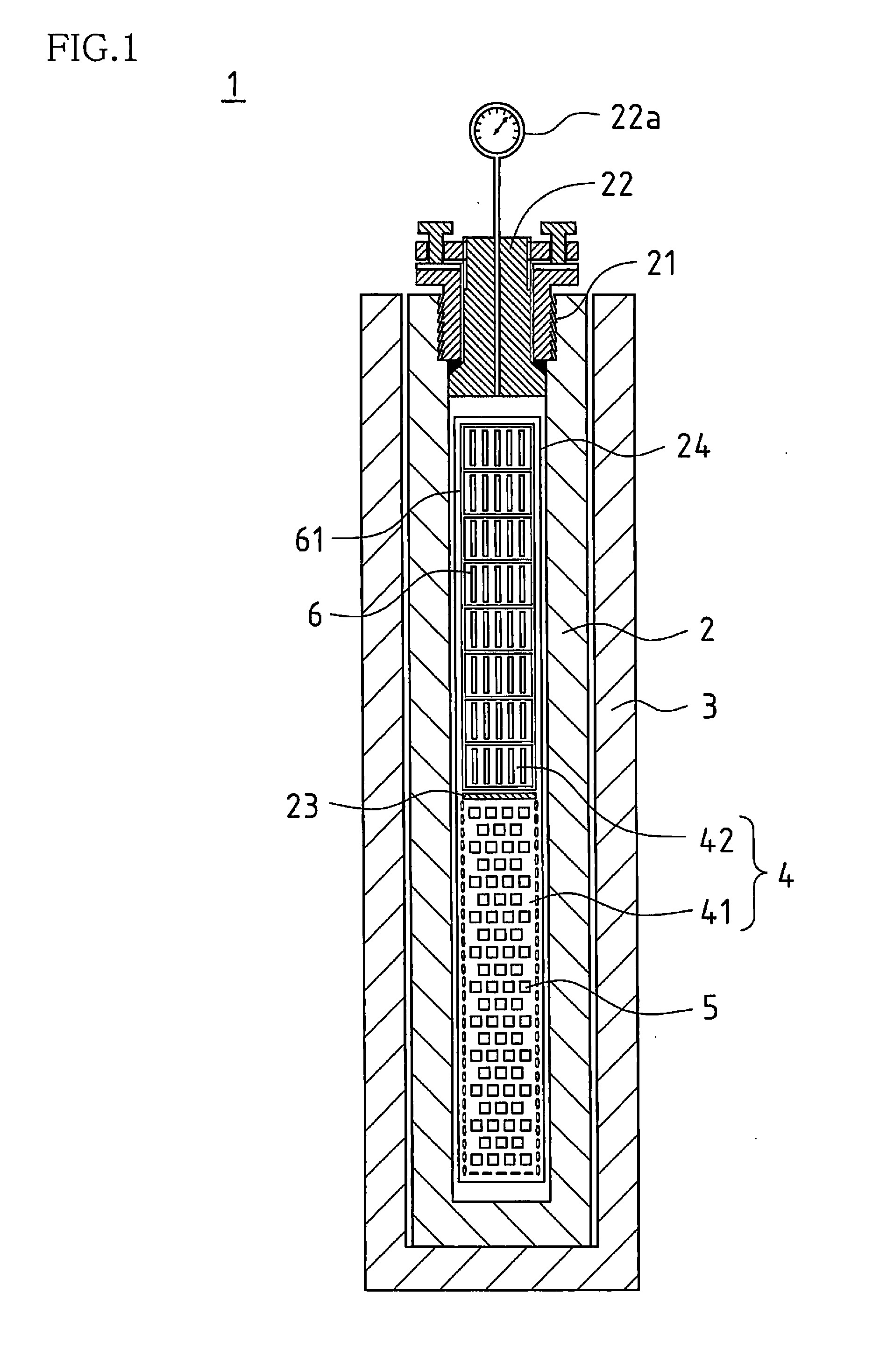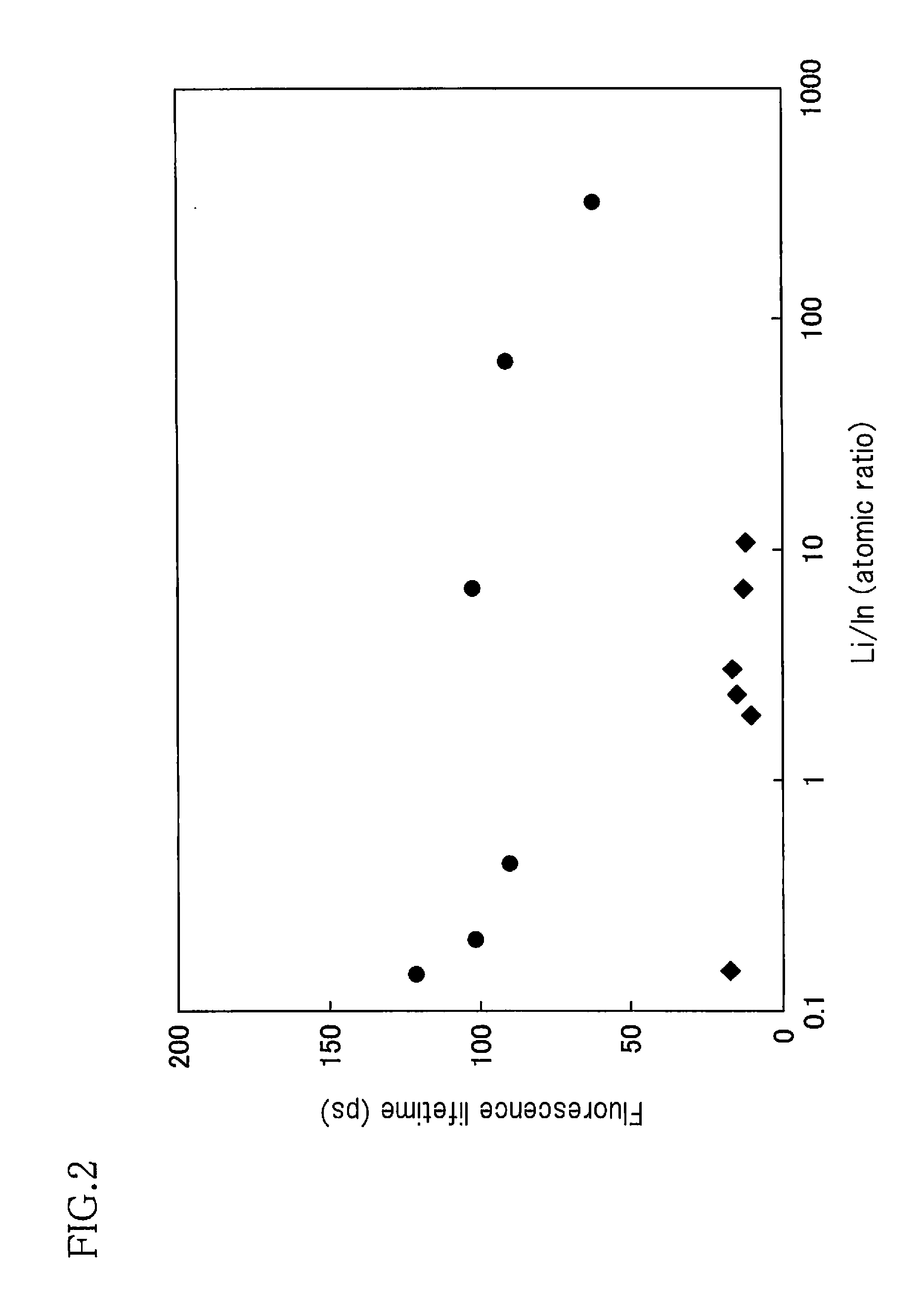Scintillator material and scintillation detector
a scintillator and material technology, applied in the direction of instruments, conversion screens, nuclear engineering, etc., can solve the problem that the generation pet devices require high time resolution, and achieve the effect of shortening the fluorescence lifetim
- Summary
- Abstract
- Description
- Claims
- Application Information
AI Technical Summary
Benefits of technology
Problems solved by technology
Method used
Image
Examples
examples
[0040]Description will be made below with regard to fluorescence characteristics of scintillator materials according to examples 1 to 6 of the embodiment produced by the above-described method for production, by way of comparison with conventional scintillator materials according to comparative examples 1 to 6.
[0041]The scintillator materials according to comparative examples 1 to 6 are each made of a zinc-oxide single crystal grown on an M surface, which is a main surface, of a seed crystal. Specifically, the seed crystal 6 used was a plate-shaped zinc-oxide single crystal with an M surface as a main surface. The plate-shaped zinc-oxide single crystal was cut from a hexagonal crystal with the M surface in parallel to a (10-10) surface, which is an M surface of the hexagonal crystal. A zinc-oxide single crystal was obtained by the above-described method for production, and the obtained zinc-oxide single crystal was cut to remove a part grown on the M surface. This part of the zinc-o...
PUM
| Property | Measurement | Unit |
|---|---|---|
| fluorescence lifetime | aaaaa | aaaaa |
| diameter | aaaaa | aaaaa |
| diameter | aaaaa | aaaaa |
Abstract
Description
Claims
Application Information
 Login to View More
Login to View More - R&D
- Intellectual Property
- Life Sciences
- Materials
- Tech Scout
- Unparalleled Data Quality
- Higher Quality Content
- 60% Fewer Hallucinations
Browse by: Latest US Patents, China's latest patents, Technical Efficacy Thesaurus, Application Domain, Technology Topic, Popular Technical Reports.
© 2025 PatSnap. All rights reserved.Legal|Privacy policy|Modern Slavery Act Transparency Statement|Sitemap|About US| Contact US: help@patsnap.com



